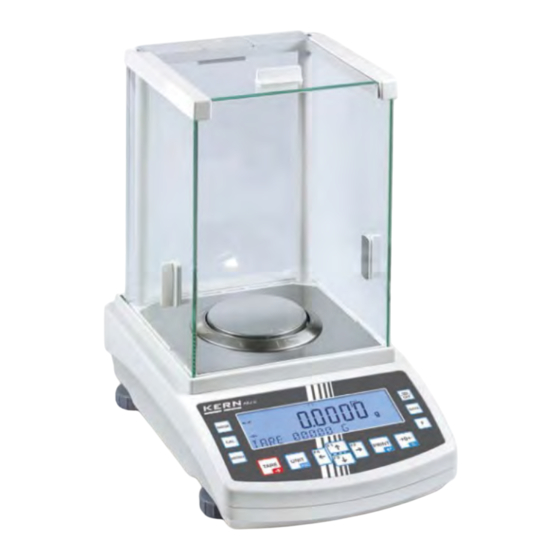
Table of Contents
Advertisement
Quick Links
Operating manual
Analysis and precision balances
KERN AEJ-C / AES-C / PLJ-C
Type AEJ_D / AES_C / PLJ_D
Version 3.0
2017-07
GB
KERN & Sohn GmbH
Ziegelei 1
D-72336 Balingen
E-Mail: info@kern-sohn.com
AEJ-C / AES-C / PLJ-C-BA-e-1730
Phone: +49-[0]7433- 9933-0
Fax: +49-[0]7433-9933-149
Internet: www.kern-sohn.com
Advertisement
Table of Contents













Need help?
Do you have a question about the AEJ 100-4DM and is the answer not in the manual?
Questions and answers